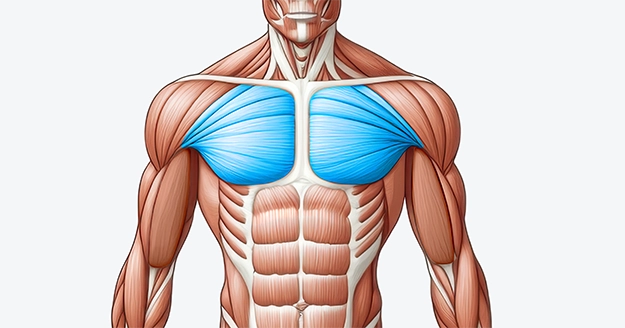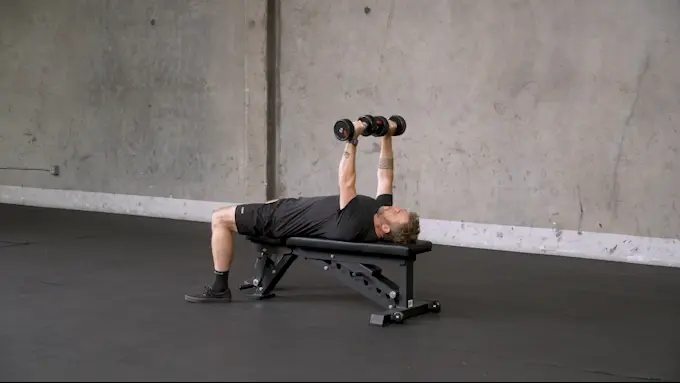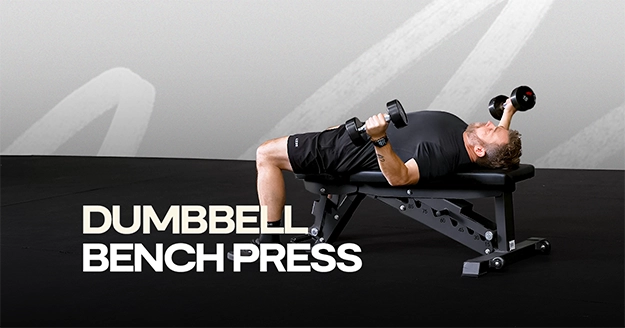Exercise Profile
Dumbbell Bench Press Overview
A mainstay of strength training exercises is the dumbbell bench press, which is a compound upper-body exercise that efficiently works the triceps, shoulders, and chest. Its unilateral action promotes increased stability by using supporting muscles, which can enhance muscular coordination and control.
For beginners who want to develop strength and stability before progressing to the barbell bench press, the dumbbell bench press is a great option. It is equally beneficial for intermediate and advanced lifters to develop unilateral strength and enhance stability.
This exercise is easily adaptable, allowing for adjustments in weight and technique to suit various fitness goals. It remains a go-to exercise for enhancing pressing strength and overall upper-body muscle engagement, especially when combined with different dumbbell bench exercises and emphasizing proper dumbbell press form.

Dumbbell Bench Press Instructions
Step 1: Sit on a flat bench’s edge, hold a dumbbell in each hand, and lay it on your thighs. Kick your legs up while holding the dumbbells near your body, and then rest your back on the bench. Keep your spine neutral and your posture straight during the exercise.
Step 2: Breathe in and hold. Then, contract your chest and press the dumbbells up, bringing them closer together. Exhale just before full elbow extension.
Step 3: To optimize the stretch on the chest, follow the same arm path as the press and carefully return the dumbbells to the starting position.

Common Dumbbell Bench Press Variations
The dumbbell press is a versatile exercise that can be modified to emphasize different muscle regions and enhance your upper body training. Check out these common variations to maximize your gains and keep your workouts fresh:
Dumbbell Bench Press Tips
- Keep tension in the pecs by avoiding a full lockout of the elbows at the top.
- Keep your elbows flared at around a 45-degree angle to your torso as you press.
- Keep your chest out and your upper back tight for utmost stability
Dumbbell Bench Press Common Mistakes
- Letting the Dumbbells Drift Too Low: Lowering the dumbbells too far can strain the shoulder joints, especially if flexibility is limited.
- Poor Wrist Positioning: Letting your wrists bend backward puts undue stress on the joints and reduces stability.
- Arching the Lower Back Too Much: Excessive arching in the lower back shifts tension away from the chest and can strain the spine.
Frequently Asked Questions
Is the dumbbell bench press more effective than the barbell bench press?
Both are effective but offer different benefits. Because each arm works independently, the dumbbell bench press improves the range of motion and encourages balanced strength. The barbell bench press lets you lift heavier weights and is easier to stabilize, making it better for building maximum strength.
Is it better to use dumbbells or kettlebells for pressing movements?
Both can be effective, but dumbbells are more common for bench pressing. They make it possible for more balanced strength growth and a wider range of motion. Kettlebells offer unique grip challenges and can enhance joint stability.
Can the dumbbell bench press help with sports performance?
Yes, the dumbbell bench press can enhance upper body strength and power, translating into improved performance in many sports. It helps develop the pressing strength needed for various athletic movements.
Post your post-workout selfies in IG and tag @trainestapp, #trainest, or DM them to us to get a shoutout on Trainest Stories!



